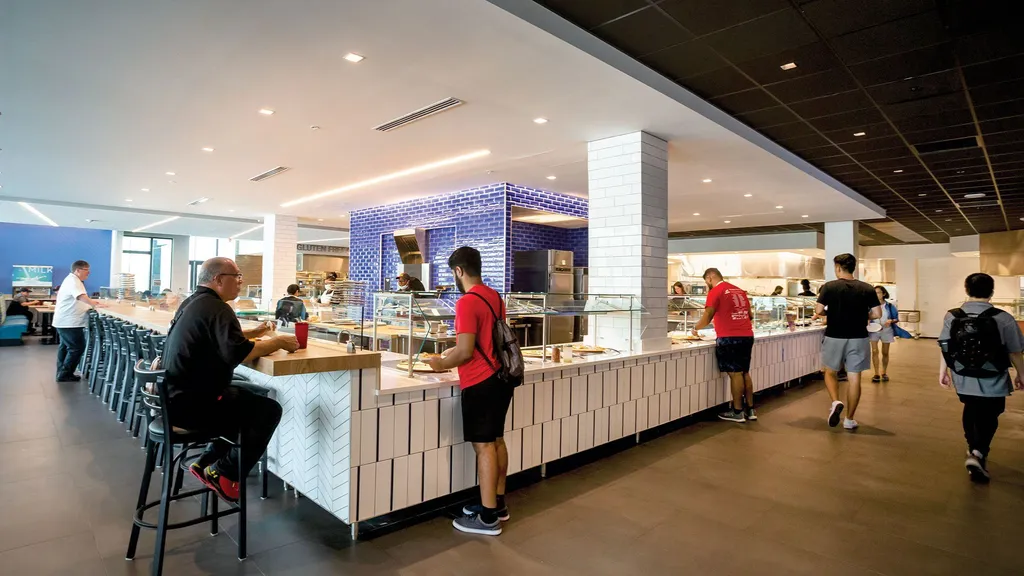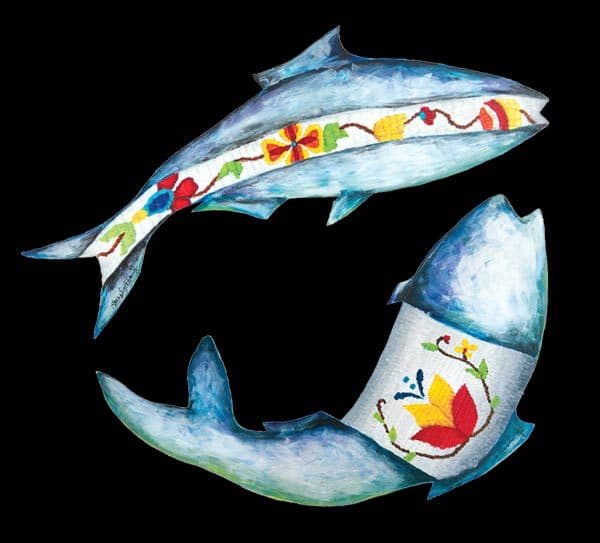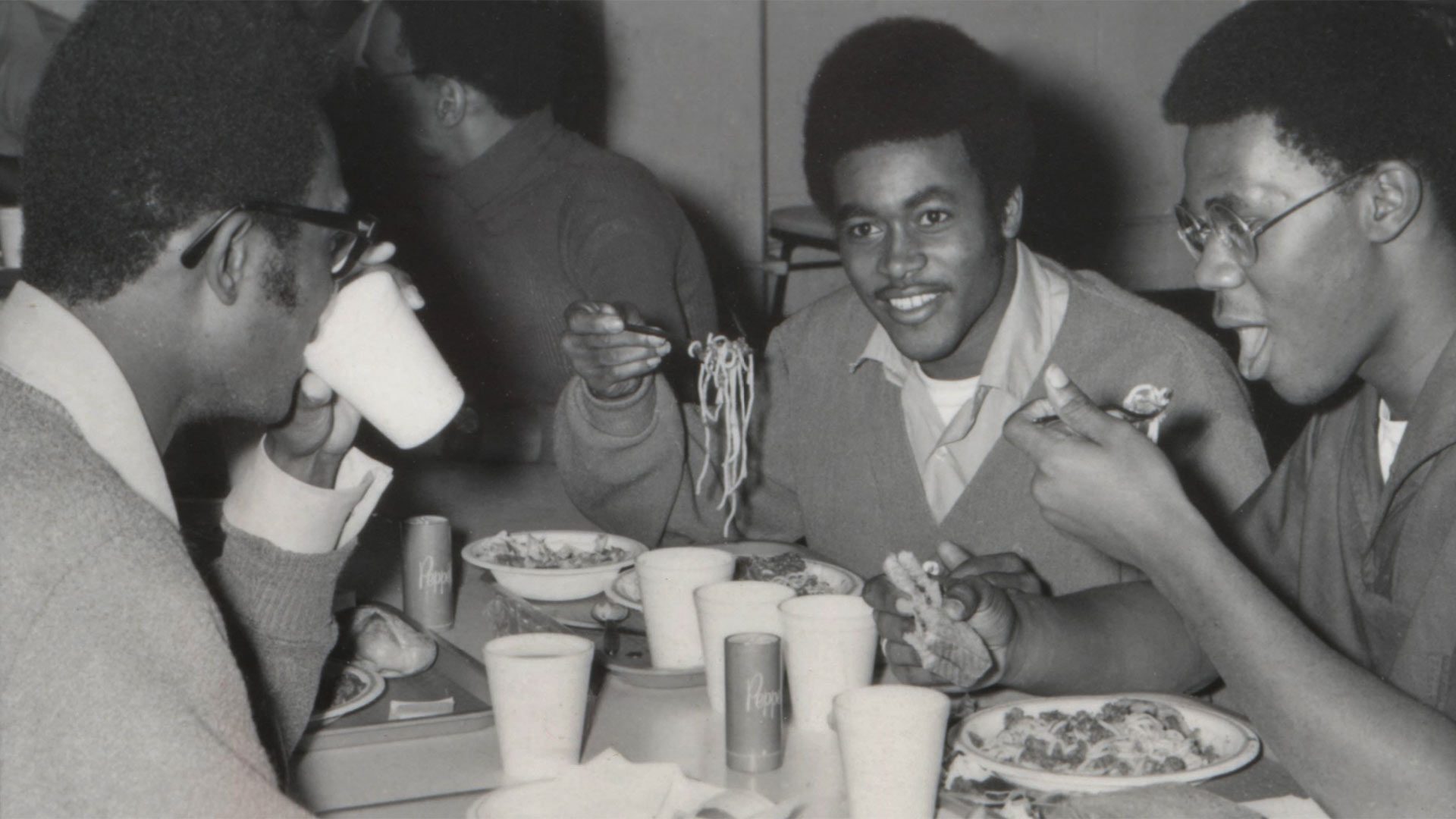- September 22, 2022
- By Annie Krakower
For hungry Terps, a fresh space to eat is served.
This semester, the Yahentamitsi Dining Hall opened in the Heritage Community, which also includes the new Pyon-Chen and Johnson-Whittle residence halls. The name means “a place to go to eat” in the Algonquian language spoken by the Piscataway people, on whose ancestral lands the university stands.
It’s UMD’s first new dining hall built since the South Campus Dining Hall debuted in 1974. So what’s been cooking in the almost half-century in between? We dug into the biggest differences in menus and Terp eating habits over the decades.
[New Dining Hall Name Unveiled at Ground Blessing Ceremony]
Amping Up the Options
Picky eaters might’ve struggled in the South Campus Dining Hall’s early days, when dinner meant a choice of just two entrees, two vegetables, a starch and a pre-plated dessert, said Interim Director Joe Mullineaux, who’s worked in Dining Services for over 40 years. Common main dishes included meatloaf, liver, and spaghetti and meatballs, and salad bar options were limited to iceberg lettuce and carrot and celery sticks. Yahentamitsi instead offers “a little something for everybody” with 11 major food stations, like Mediterranean, Asian, comfort food, breakfast all day, gluten-free and a bakery.
From Frozen to Fresh
The South Campus Dining Hall was constructed with the goal of serving “convenience” foods, Mullineaux said, so meals would arrive frozen in big metal pans, “sort of like a huge TV dinner,” then get reheated. Now fresh cooking is the norm, and Yahentamitsi takes that to a new level. On top of made-to-order options throughout the dining hall, the “Chef’s Corner” allows Dining Services’ 16 trained chefs to experiment with flavors and cooking styles and explain their creations to curious Terps.
See Ya, Styrofoam
Terps back in the ’70s preferred using plastic and Styrofoam plates and silverware, considering that more sanitary, said Bart Hipple, assistant director of marketing and communication for Dining Services. Advances in dishwashing technology over the decades have ushered in the more sustainable use of ceramic dishes and glassware.

Accepting Appetites, Anytime
Students a generation or two ago had to be careful not to sleep through breakfast when the South Campus Dining Hall opened, or they’d be stuck waiting until the lunchtime slot to eat. But Yahentamitsi continues Dining Services’ “Anytime Dining” option by staying open from 7 a.m. to 9 p.m. “It’s a much better solution,” Hipple said. “Whenever a student has time in their schedule—when it’s the most logical and sensible—they can come eat.”
An Inviting Ambiance
While the kitchen is hidden in the South Campus Dining Hall, counters with glass dividers at Yahentamitsi give students a front-row seat into meal prep. “You’re actually going to see the chefs at work,” Mullineaux said. Adding to the atmosphere of the 1,000-seat, 60,000-square-foot space are a balcony overlooking athletics facilities and floor-to-ceiling glass, and Dining Services applied for a LEED (Leadership in Energy and Environmental Design) Silver certification.
Honoring the Piscataway People

Yahentamitsi will display art, artifacts and other educational materials that represent and raise awareness about the Piscataway, including:
- A pronunciation guide and definition of “Yahentamitsi”
- A map of the Chesapeake Bay highlighting Piscataway villages
- A mural that reads, “We are still here.”
- Columns embodying the Seven Grandfathers, which each represent a trait like wisdom, honesty and love
- Columns representing Piscataway traditions of gathering food from water and land
- A wall displaying treaties between the Piscataway people and colony, state and federal governments
- Artistic representations of shad (above), an important fish in Piscataway culture
Topics
Campus & Community